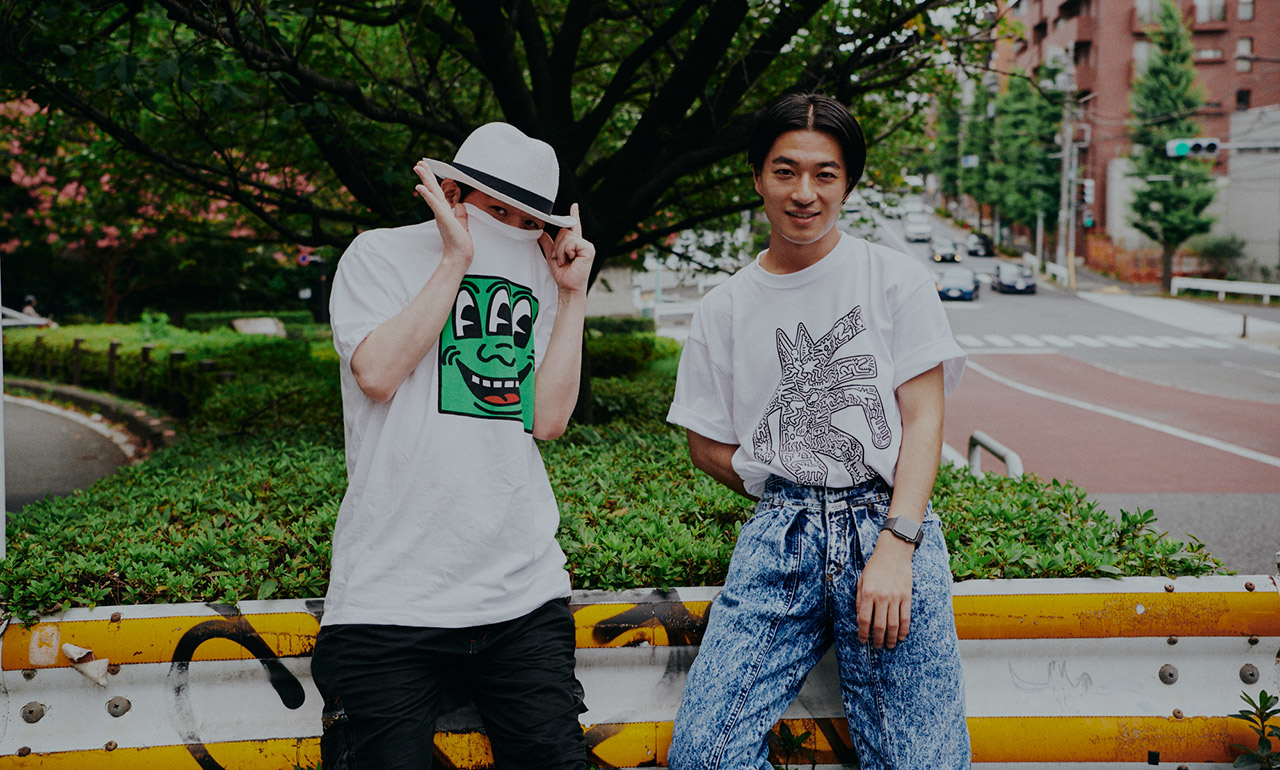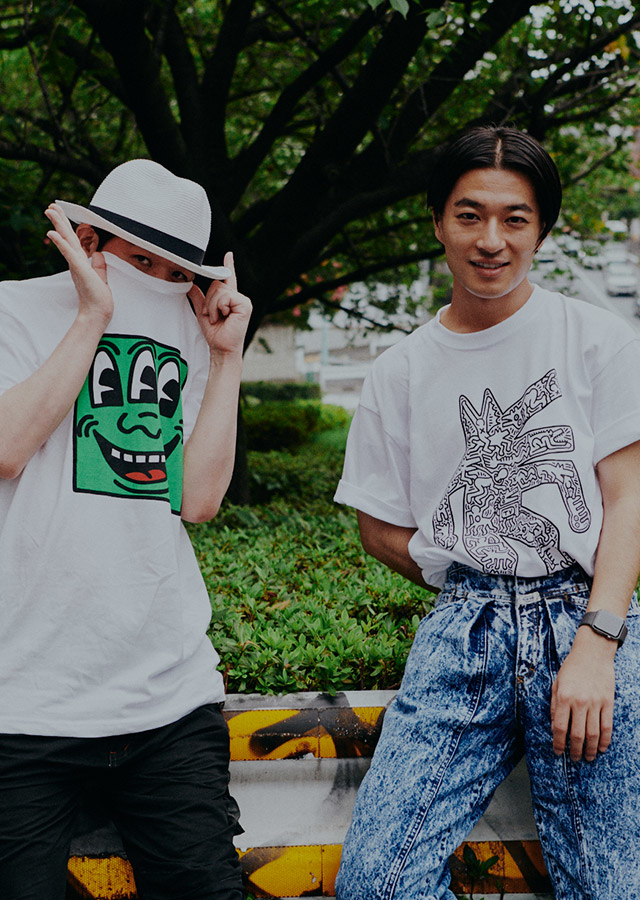1980年代アメリカの現代美術を代表する作家、キース・ヘリング。1990年に31歳の若さで亡くなった彼の生誕60年目である今年、表参道ヒルズで回顧展『キース・ヘリング生誕60年記念 特別展 Pop, Music & Street キース・ヘリングが愛した街 表参道』が2018年8月9日(木)から開催される。
Keith Haring visited Japan four times and put on a guerrilla performance on Omotesando, the main road leading to the Meiji Shrine, in 1988. Naohiro Ukawa was in his late teens at that time and learned about Keith’s ideas through magazines and music, which influenced his future work. Along with Hiraku of the Nakamura Keith Haring Collection, who curated the exhibition, Ukawa searches for the culture of Omotesando at the time of Keith’s visit to Japan and what Keith left for us.
---- During his 1988 visit to Japan, Keith Haring put on a guerilla performance at which he created chalk drawings on the public street in front of the current Omotesando Hills.
Ukawa : It was covered by numerous magazines. Even though I was already living in Tokyo at that time and had just started my own artistic endeavors, I never had the opportunity to meet Keith.
Hiraku : That performance demonstrated Keith’s stance of stressing communication with all people. There is a record of him saying that he got to know Japan by walking the streets of Tokyo himself, and those drawings were the common language that he used to communicate with foreigners who did not speak his language. Therefore, he probably expressed what he saw in Tokyo and what he wanted to communicate to Japanese people.
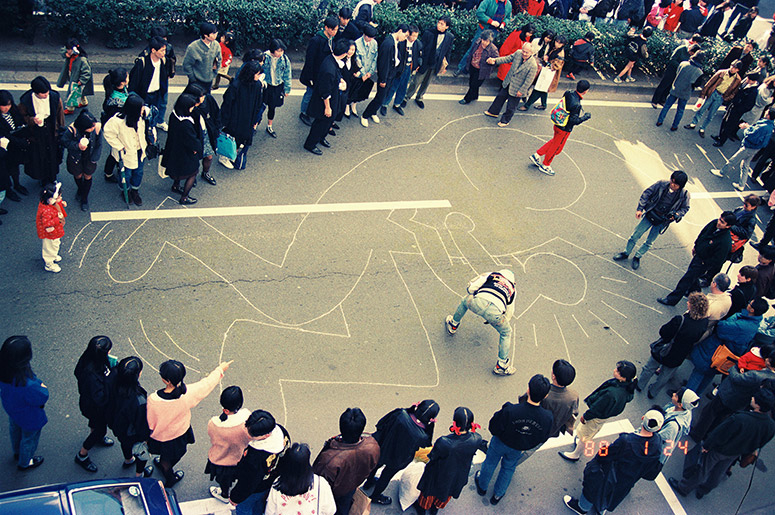

Omotesando performance (first time publicly exhibited) 1988 photo by© Akira kishida
Ukawa : Keith visited Japan four times during his life, but his first trip in 1983 was something special in various ways. Keith, a regular at the legendary NY club Paradise Garage, was a clubber who loved the city. When he dropped by Pithecanthropus Erectus, the first club in Japan, which Moichi Kuwahara opened in 1982, he left a drawing on the wall. Speaking of that, I heard that the wall of Pithecanthropus Erectus was also tagged by Basquiat, and if it still existed, it would be a historic piece of art equivalent to a World Heritage (site).
It would be unthinkable to do that now. Popular artists are unable to freely sign or even slightly tag anything because it makes that item extremely valuable. That visit to Japan occurred at the same time that Haring was working on a massive mural for the Watari Museum of Contemporary Art, which was recently restored. This was 1983, right before Keith made his explosive break out. It was a great achievement for Mr. Watari.
Hiraku : In 1988, Haring choose chalk that would wash away later exactly for that reason. It seems that there was another idea of having him draw on the body of a car, but that never occurred since the car would become a piece of art. Even so, it was special since chalk was the medium that Keith first worked with. The subway art he spread on the New York subway system, his breakout work, was also done in chalk.
Ukawa : Drawing something with the idea that it will disappear later is ingenious. The style of leaving pieces of work using chalk was probably partially done out of an awareness of the social sculpture of Joseph Beuys (1921–1986), one of Germany’s leading modern artists), and if that is true, its roots can also be traced back to the anthroposophy of Rudolf Steiner (1861–1925), who also had an influence on Beuys. If one interprets it that way, one can feel a certain type of spirituality in the chalk’s transiency (laughter).
Hiraku : Right. Keith was strongly influenced by Beuys.
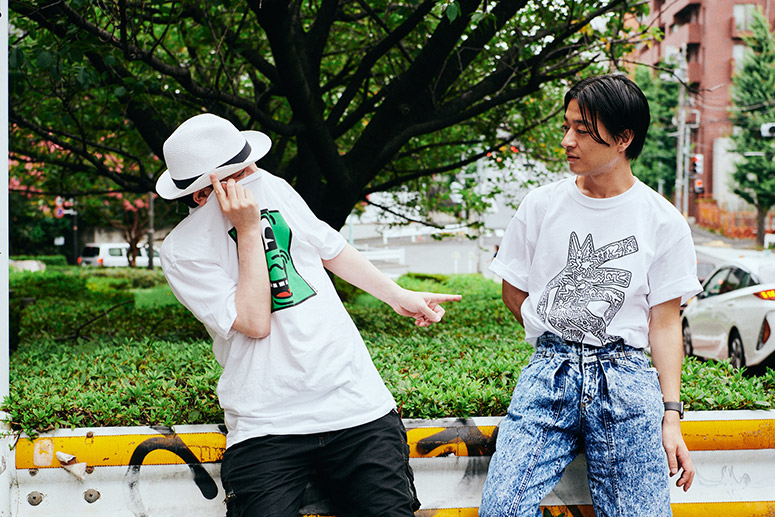

From left, Naohiro Ukawa and Hiraku (Nakamura Keith Haring Collection)
Ukawa : One also has to focus on the pedestrian-only zone that extends from Omotesando to Harajuku. This was in 1988, right before the boom period for bands when Mitake Yuji No Ikasu Bando Tengoku (a segment of a popular TV program that provided a venue for new bands) was on the air. At that time, the Takenoko-zoku (a type of dance group that wore colorfully clothing and danced in a distinctive style on the sidewalk to music from stereos) was going out of fashion, and the movie Wild Style was released. Following Rock Steady Crew’s visit to Japan, breakdancing took off as the major trend for street dancing. If pressed to say what were the driving trends in the Omotesando pedestrian zone before that, (I would say that) rockabilly and Teddy Boys from the UK, centered on Masayuki Yamazaki’s store Cream Soda, were the main force. After that, the derivative mods, punks, and b-boys appeared. The pedestrian zone was a microcosm of that delinquent trend. That is, the Omotesando pedestrian zone is the history of Harajuku rude boys (slang for delinquent and gangster youth).
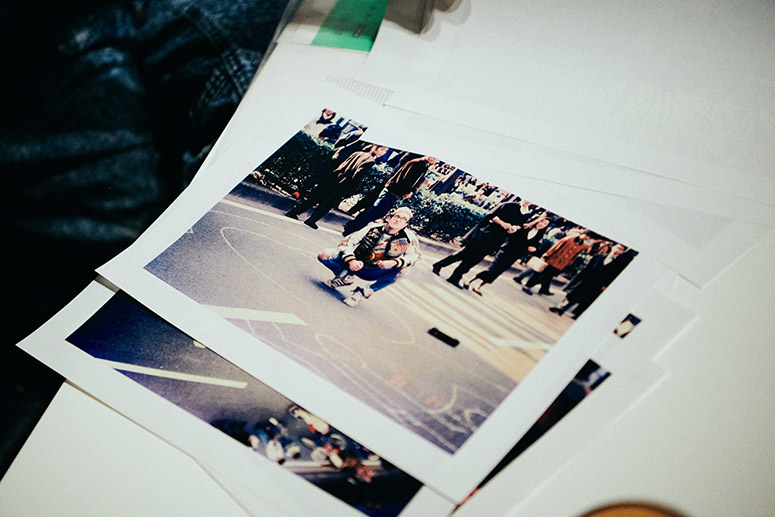

Omotesando performance (first time publicly exhibited) 1988 photo by© Akira kishida
Ukawa : Therefore, the streets that run from Harajuku to Omotesando are one of the few places where all the traces of that history remain. All the fashion, music, youth culture trends from the late 1970s through the 1990 created a harmonious whole in this Tokyo street.
It was because of this that Keith put on his performance there. CRAZY-A, Japan’s first b-boy who inherited the mantle of Rock Steady Crew discussed above, and DJ KRUSH, who started to do hip hop after seeing the movie Wild Style, also put on performances in that pedestrian zone, which I sent to see.
Hiraku : In fact, this exhibition includes not only a photographic record of that, which has never been exhibited before, but also photos that happed to be taken closer to Yoyogi Park.
Ukawa : Oh God!! Was the inspiration for this the people dancing in the pedestrian zone? Or was it a drawing documenting street dancing. Looking at it again, it is amazing.
Hiraku : It seems that he continued to draw all along Omotesando and happened to run into the dancers. Because Keith’s own works were heavily influenced by breakdancers and b-boys, it expresses the impromptu dance and movement in that way.
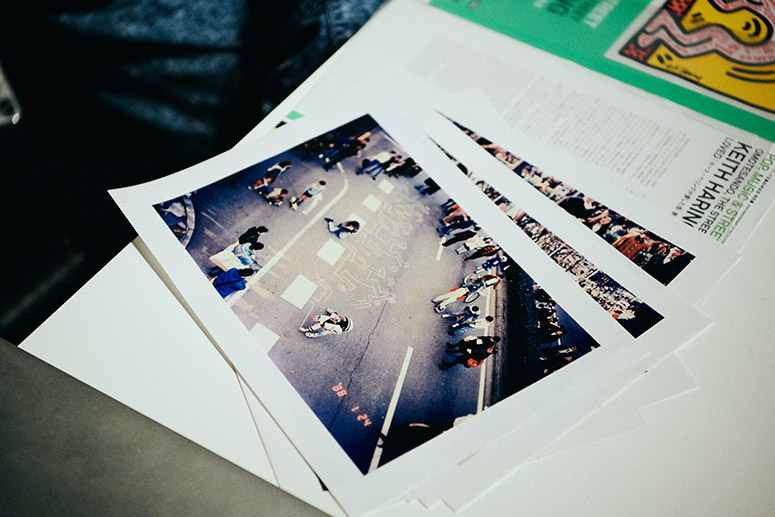

Omotesando performance (first time publicly exhibited) 1988 photo by© Akira kishida
Ukawa : I remember!! There is the legend that when DJ KRUSH was scratching for breakdancers in Omotesando pedestrian zone, Keith Haring suddenly appeared. KRUSH, who had brought his recently born child along, had Haring tag the stroller. This photo is of that day. This is an archive of legends.
The style is close to that of motion graphics that indicate a strong awareness of animation. It is a drawing with the video as the x axis (horizontal axis). If these series of movements are taken as a story, you are seeing a single frame. Keith started before here and continued on.
As for the pedestrian zone at that time, a massive flea market was held almost every weekend at Yoyogi Park, and I passed by the performance on my way there. Because of that, I clearly remember the atmosphere of Keith’s performance. At that time, one could see avant-garde music, art, and performances here, and people who wanted to go to a flea market before Yahoo! Auctions came to this street. In other words, the area from Omotesando to Harajuku was like the Internet of that time, and there was an information network, centered on the Meiji Shrine, that spread throughout the world.
These photos are incredible. This brings back memories of the Tokyo culture of that time, the culture I experienced. It was during the height of the bubble economy. Since my teens, I enthusiastically listened to punk, hardcore, noise/avant-garde music, and I am certain that it is because of the DJ culture that I learned so much about culture in the form of music. That is, the concept of sampling, cutting up, and remixing that extends from hip hop to house forced me to impartially listen to a broad range of music. Larry Levan was the resident DJ at Paradise Garage, a former warehouse, and the resident audience (laughter) was Keith Haring.
In Japan, the Gold club opened the following year in Shibaura, heralding the start of the so-called ohako (large box) period that introduced full scale sound systems. In terms of art trends, this overlapped with the graffiti (street art) trend, and following post modernism, simulationism grew in popularity. Noi Sawaragi subsequently reexamined this in his book “Simulationism: House Music and Appropriation Art”. That was the atmosphere at that time.
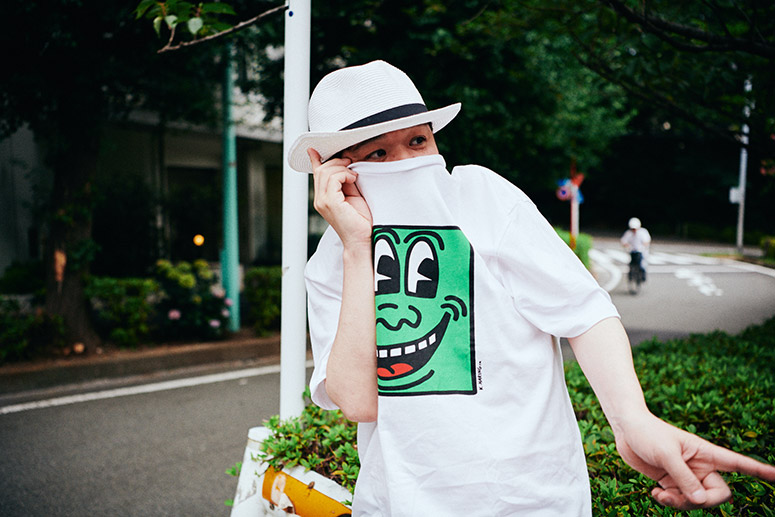

---- What did Keith mean to you, Ukawa? Was he an important person for you even though you were never able to meet him?
Ukawa : Keith Haring embodied the street medium from NY. I was born and raised in Shikoku, and he was an important artist that I was conscious of ever since Andy Warhol. He was responsible for transforming pop art into a more advanced form and incorporating minimal art and conceptual art. He was one of the vanguard artists of the 1980s.
Of course, I was still a junior high school student at that time and had no idea of what direction he was moving in or ideas he held. After that, I gradually come to focus on who Keith really was because of various books and experiences. In a certain way, that is continuing even now. At DOMMUNE, we have a Paradise Garage special each year around the date of Larry Levan’s birth, and many people speak about Keith.
Victor Rosado, Larry’s right-hand man; David DePino; and Jellybean, Madonna’s boyfriend at that time, have visited my studio and talked about their interactions with Keith themselves. It is probably because they came every week for five years (laughter). Because of that, I feel that I continue to discover a new street medium that is Keith Haring.
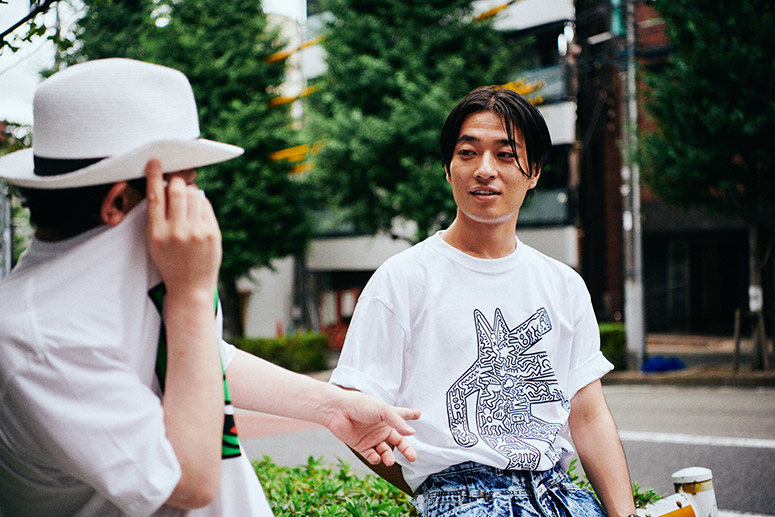

---- Young people meet and get to know various people over the Internet now, but at that time, the street was the place to be.
Ukawa : If one goes back, it is also connected with the streets of Shinjuku in the 1960s. In addition to happenings (one type of artistic expression), there were the Neo Dadaism Organizers, Hi Red Center, and Zero Dimension (all Japanese avant-garde art groups). Although the 1970s are referred to as the turned-off era, the psychedelic and hippy movements were rooted in the street in the 1960s, and Shinjuku was the heart of that. That moved to Harajuku in the 1980s, and it is not an exaggeration to say that street art developed because of Keith and Basquiat.
When talking about street art, I would definitely like to discuss not only the history up to Banksy but also Rammellzee (a legendary graffiti artist and rapper who was active since the dawn of the hip-hop era), whose retrospective was recently held in NY, and I would like to stress the difference between Rammellzee and Keith. I twice performed with Rammellzee, who died in 2010. Espousing gothic futurism that also resonates with the warped avant-garde movement of the 1960s without getting caught up in commercial fashion and design, he was the embodiment of NY extreme street culture.
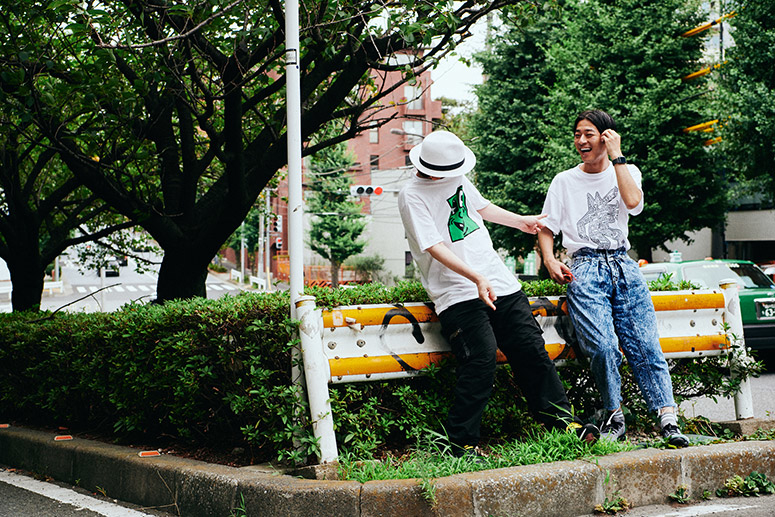

Ukawa : Rammellzee embodied the extreme, and I respected him as my teacher, but I liked Keith, a completely normal sincere activist. It is because he was unique in that he could travel between the extreme realms of personal desire and appealing to the masses as a creator of public art. The innocence of both Basquiat and Rammellzee is based on the danger that their innocence is another form of insanity, and that was their overpowering appeal.
Speaking of that, the buzz is that ZOZOTOWN President Maezawa purchased a Basquiat piece for 12.3 billion yen at auction. It is my opinion that this insanity exists in that “untitled” piece. Basquiat died of an overdose at the age of 27, and Keith Haring passed away in 1990 from complications from AIDS. When the Pop Shop, a store produced by Keith, opened in Tokyo in 1988, he must have been conscious of his approaching death.
Hiraku : During his final visit to Japan in 1988, he understood that he was dying and probably wanted to communicate with various people while he was still alive. That is probably why he energetically did his work, such as the live drawing on Omotesando.
キース・ヘリング生誕60年記念 特別展『Pop, Music & Street キース・ヘリングが愛した街 表参道』の詳細はこちら
Profile
NAOHIRO UKAWA
Naohiro Ukawa was born in Kagawa in 1968. A video artist, graphic designer, VJ, writer, professor at Kyoto University of Art and Design, and modern artist, he is an omni-directional artist whose activities extend to an extremely broad range of fields. He is working to eliminate the boundaries between existing fine art and pop culture and is undertaking the freest expressive activities in Japan at the current time. In March 2010, he suddenly launched the live-streaming studio/channel DOMMUNE on his own, and it generated record views when launched and continues to be a hot topic both in Japan and overseas. He has also served as a judge for not only Japan's Agency for Cultural Affairs’ Japan Media Arts Festival (2013–2015) but also the Sound Art Category of Ars Electronica (2015). At the Takamatsu Media Art Festival, put on by the city of Takamatsu, he played three roles—general director, curator, and chief judge—and the conceptual structure based on his unique judging perspective shook the art scene. In 2016, he launched the 500 m wide DOMMUNE LINZ satellite studio in the Train Hall of Ars Electronica, and his live streaming from Austria generated a buzz throughout the world. He is expected to participate in the Setouchi Triennale and introduce the latest DOMMUNE project in 2019.
http://www.dommune.com/
Hiraku
Nakamura Keith Haring Collection Program and Marketing Director Hiraku worked as a model, mainly for art projects in New York, and has served as a subject for numerous photographers, including Ryan McGinley and Leslie Kee. Having found fame in the night life and underground culture of New York, he worked as the creative director for Patricia Field in 2010. The VOGUE series of products that he produced are beloved by numerous Hollywood celebrities. He appears on various talk shows, mainly ones related to social media, and is active in numerous fields including as a model and ambassador. Currently in 2018, he is involved in several projects through the art of Keith Haring. Continuing on the spirit of the artist, Hiraku actively participates in social movements, such as raising awareness of human rights for LGBT, preventing HIV/AIDS, and supporting people that are HIV positive.
http://www.nakamura-haring.com/
Interview and text: Taisuke Shimanuki
Photography: Nozomu Toyoshima
Editing: CINRA.NET
All Keith Haring Artwork © Keith Haring Foundation
Courtesy of Nakamura Keith Haring Collection
FEATURE
VIEW ALL-
 2023.11.09
2023.11.09「LÝFT GÝM」エドワード加藤「"表参道ヒルズのジム"ならではの付加価値」
-
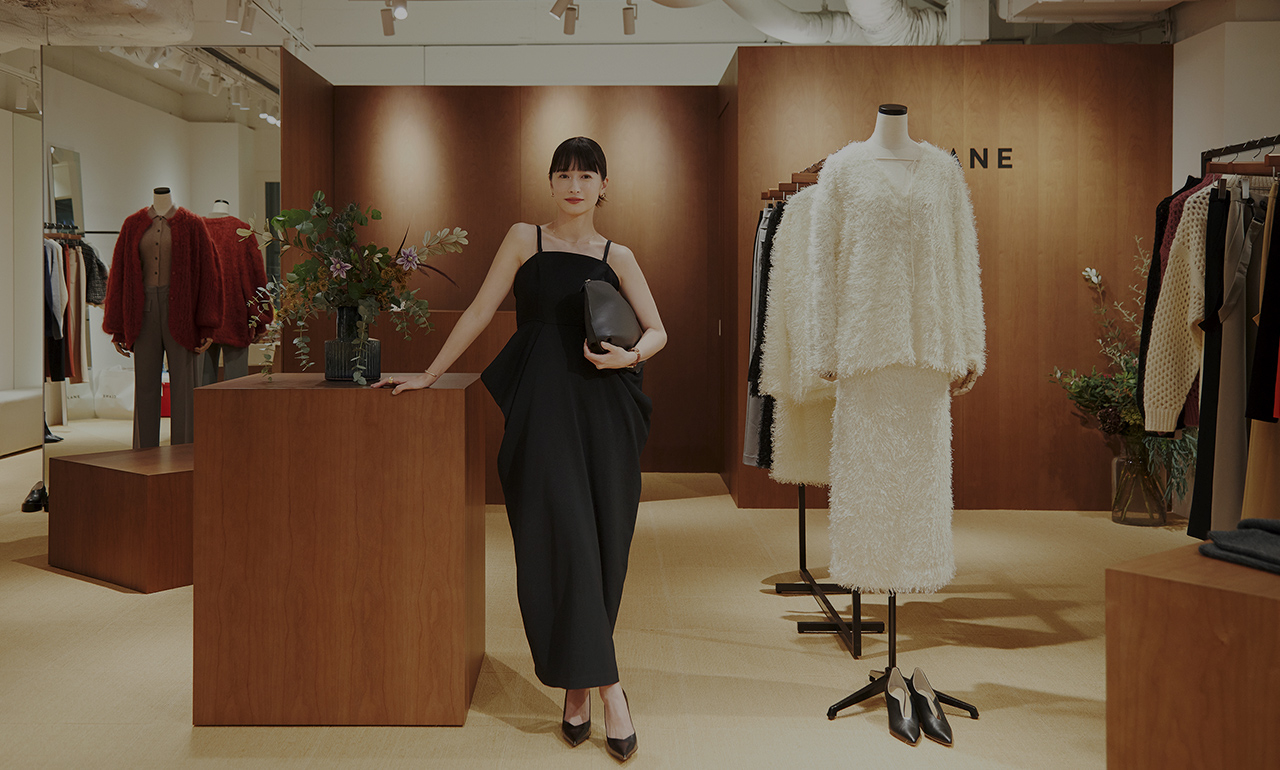 2023.10.31
2023.10.31"CLANE" 8th anniversary. Ena Matsumoto talks about “things that change, things that don’t change”
EVENT&TOPIC
VIEW ALL-
 2024.04.25
2024.04.25ユナイテッドアローズ ゴルフ 5.3 NEW OPEN
コンセプトは "GOOD MANNER, GOOD SENSE, GOOD PERFORMANCE"。ベーシックでありながら、ほどよくトレンドを取り入れたデザイン性と、スポーツウエアとしてのパフォーマンスを追求した機能性の高いゴルフウェアを取りそろえています。 本館B1F「ヒルズ ボックス」にて2024年5月3日(金・祝)~6月9日(日)までの期間限定ショップとなります。
-
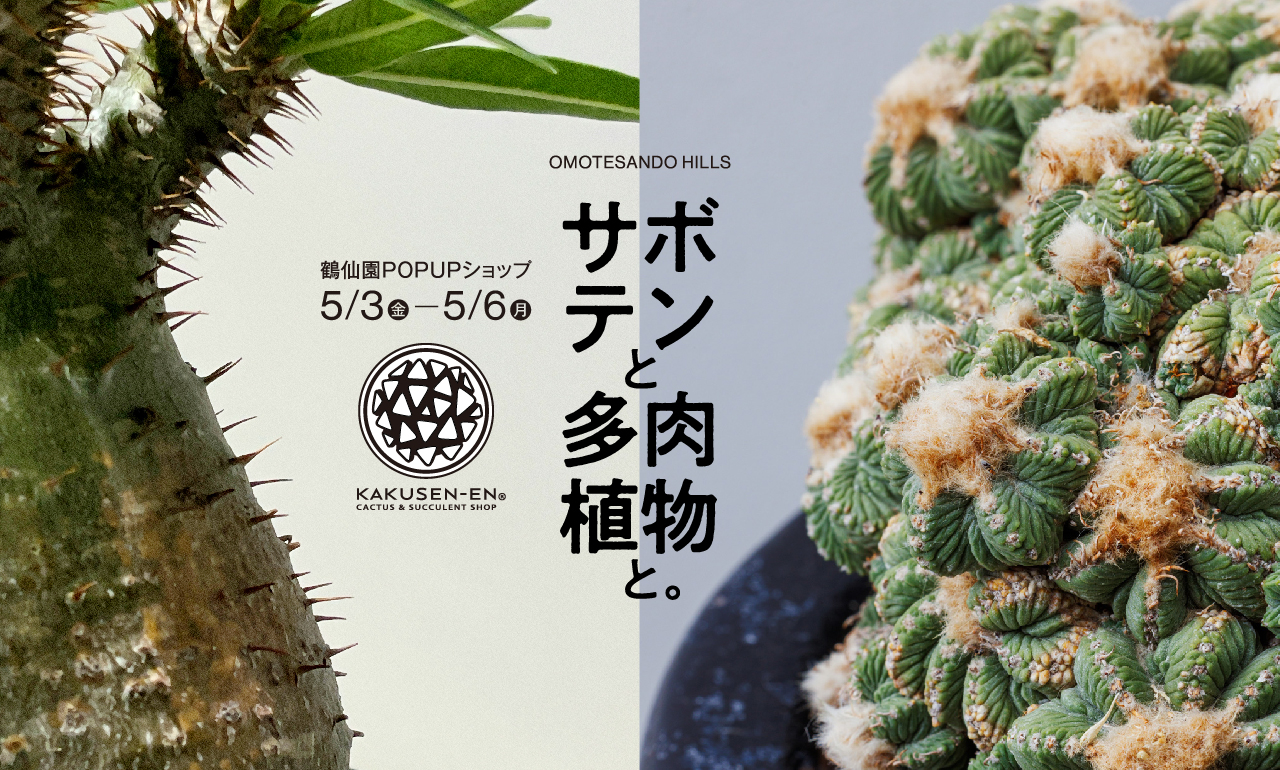 2024.04.17
2024.04.17サボテンと多⾁植物と。
― 浪漫溢れる不思議と神秘に迫る世界へようこそ ― 表参道ヒルズがゴールデンウィークにアレオーレとビザールな世界でマニアを唸らせる、サボテンと多肉植物の専門ショップ「KAKUSEN-EN(鶴仙園)」とコラボレーション!POPUPショップと吹抜け大階段の空間装飾を行います。 葉や茎に⽔分をたっぷり含んだ姿が可愛らしい多⾁植物。その種類は豊富で、サボテンをはじめ、根や幹の部分が⼤きく膨れ上がったコーデックス(塊根植物)など突き詰めると果てがない奥深さがあります。近年魅了され続けてやまないマニアックな愛好家だけでなく、植物から癒される、⼈と⾃然の新しい関係性との出会いを是非この機会にご堪能ください。 ※KAKUSEN-EN(鶴仙園)POP UP ショップは 5月3日(金・祝)~5月6日(⽉・祝)開催。吹抜け大階段の空間装飾は5月12日(⽇)まで実施します。 <KAKUSEN-EN(鶴仙園)> 今や日本でサボテンを育てているならば、知らない人はいないであろう多肉植物専門店。北⽶、中⽶、南⽶そしてアフリカ⼤陸原産のサボテンはじめとした多⾁植物を取り扱い、一般層からコア層まで、幅広く満足させるサボテン・多肉植物の専門店として、一線を画す存在となっている。
-
 2024.04.09
2024.04.09KIDS & FAMILY Mail News
The new "HILLS APP/HILLS CARD KIDS & FAMILY Mail News" will start on Wednesday, April 24th. Please register if you are interested.
